476-28-8
| Name | lycorine |
|---|---|
| Synonyms |
3,3a-Didehydrolycoran-1a,2b-diol
Amarylline (1a,2b)-3,12-Didehydro-9,10-[methylenebis(oxy)]galanthan-1,2-diol (1S,2S,12bS,12cS)-2,4,5,7,12b,12c-Hexahydro-1H-[1,3]dioxolo[4,5-j]pyrrolo[3,2,1-de]phenanthridine-1,2-diol 1H-[1,3]Dioxolo[4,5-j]pyrrolo[3,2,1-de]phenanthridine-1,2-diol, 2,4,5,7,12b,12c-hexahydro-, (1S,2S,12bS,12cS)- Lycorine (1S,2S,12bS,12cS)-1,2-diol-2,4,5,7,12b,12c-hexahydro-1H-[1,3]dioxolo[4,5-j]pyrrolo[3,2,1-de]phenanthridine Galanthidine Belamarine Licorine Narcissine |
| Description | Lycorine is a natural alkaloid extracted from the Amaryllidaceae plant family with antiviral, antimalarial and antiinflammation activities. Lycorine inhibits the growth and metastasis of hormone-refractory anti-prostate cancer (PCa) and induces cell apoptosis[1]. |
|---|---|
| Related Catalog | |
| In Vitro | Lycorine inhibits cell proliferation in a dose-dependent manner in the abovementioned 4 PCa cell lines, and the IC50 ranged from 5 μM to 10 μM., it also shows Lycorine has little effects on PNT1A cell's proliferation[1]. |
| References |
| Density | 1.5±0.1 g/cm3 |
|---|---|
| Boiling Point | 477.4±45.0 °C at 760 mmHg |
| Melting Point | 253-255ºC (dec.) |
| Molecular Formula | C16H17NO4 |
| Molecular Weight | 287.310 |
| Flash Point | 242.5±28.7 °C |
| Exact Mass | 287.115753 |
| PSA | 62.16000 |
| LogP | 0.77 |
| Vapour Pressure | 0.0±1.3 mmHg at 25°C |
| Index of Refraction | 1.733 |
CHEMICAL IDENTIFICATION
HEALTH HAZARD DATAACUTE TOXICITY DATA
|
| Hazard Codes | T: Toxic; |
|---|---|
| Risk Phrases | R25 |
| Safety Phrases | 45 |
| RIDADR | UN 2811 6.1/PG 3 |
| WGK Germany | 3 |
| Hazard Class | 9.0 |
| Precursor 8 | |
|---|---|
| DownStream 3 | |



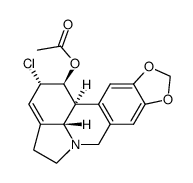
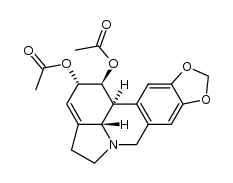
![(1S,2S,3a(1)S,12bS)-7-oxo-2,3a(1),4,5,7,12b-hexahydro-1H-[1,3]dioxolo[4,5-j]pyrrole[3,2,1-de]phenanthridine-1,2-diyl diacetate structure](https://image.chemsrc.com/caspic/050/6391-78-2.png)
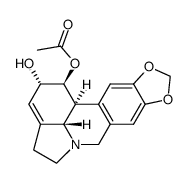
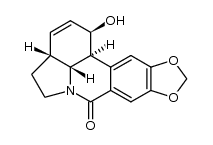
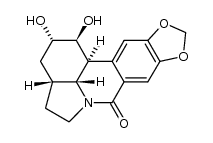
![(1S,2S,3a(1)S,12bS)-1,2-dihydroxy-3a(1),4,5,12b-tetrahydro-1H-[1,3]dioxolo[4,5-j]pyrrolo[3,2,1-de]phenanthridin-7(2H)-one structure](https://image.chemsrc.com/caspic/091/58700-93-9.png)
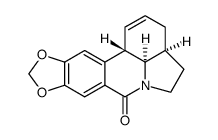
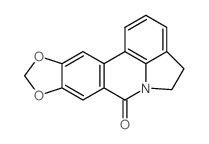
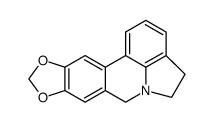
![5-methyl-[1,3]dioxolo[4,5-j]phenanthridin-6-one structure](https://image.chemsrc.com/caspic/173/40141-98-8.png)